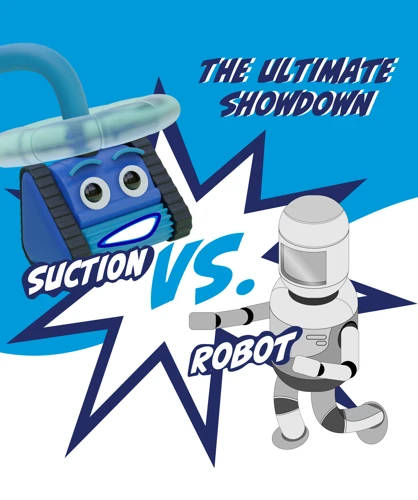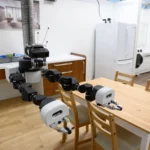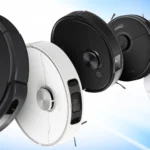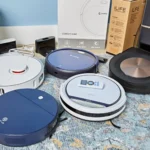Imagine walking into your home after a long day at work and being greeted by spotless floors. Sounds like a dream come true, right? With the endless options available, it can be perplexing to choose between a traditional vacuum cleaner and a robot vacuum cleaner. The truth is, both have their unique features and drawbacks. In this article, we delve into the ultimate showdown: robot vs. traditional vacuum cleaners. We’ll take you through how they work, their pros, and cons, and a detailed comparison of their design, features, and performance. By the end of this article, you’ll have a clear understanding of which vacuum cleaner is the perfect fit for your cleaning needs. So buckle up and let’s dive in!
Robot Vacuum Cleaners
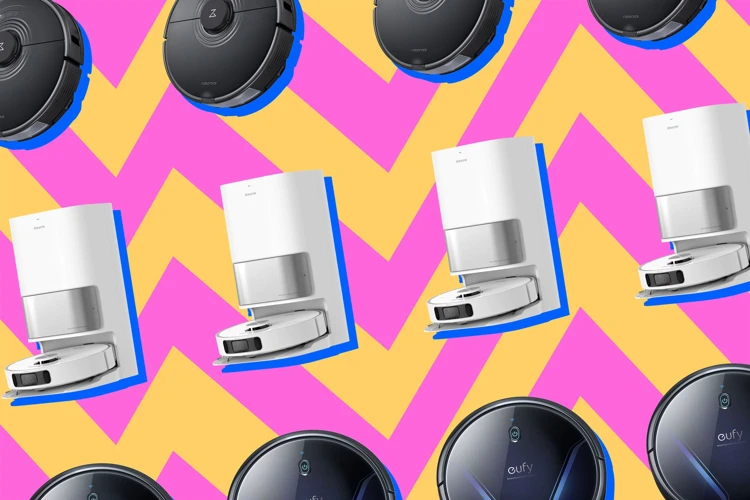
As we continue delving into this ultimate clash of cleaning titans, it’s time to shine the spotlight on a relatively new contender – robot vacuum cleaners. These little gadgets have been gaining increasing popularity as they offer an effortless cleaning solution for busy households. With their sleek designs and advanced features, they seem to be the future of home cleaning. But are they really as good as they sound? Let’s explore how they work, their pros and cons, and how they stack up against traditional vacuum cleaners. And if you want to know more about the pros and cons of both robot and traditional vacuums, check out our article on pros and cons of robot and traditional vacuums.
How do they work?
Robot vacuum cleaners may seem like a product of science fiction, but they actually operate on a relatively simple algorithm. The device is comprised of several small wheels, a battery, a motor, a dustbin, and sensors. They use sensors to identify obstacles and map out a room, allowing them to navigate autonomously. There are a variety of sensors in robot vacuum cleaners, including infrared, acoustic, and optical. The sensors enable the robot vacuum cleaner to detect obstacles and identify any drop-offs, preventing them from falling off edges or down stairs. They use brushes, suction and a filter to pick up dirt and debris from floors and carpets.
Traditional vacuum cleaners have been around for decades and make use of a motor-driven suction system. These devices use a motor to create suction that pulls dirt and debris off of floors and carpets. Once sucked up, the dirt is generally deposited into a bag or bin that is disposed of later. Traditional vacuum cleaners employ a series of tightly sealed tubes to channel the airflow and ensure the suction force is not lost. These tubes are attached to a nozzle, which is moved back and forth over the surface that is being cleaned.
These two cleaning instruments may have different methods of operation. Still, both robot vacuum cleaners and traditional vacuum cleaners can accumulate a lot of dirt and debris overtime. You can learn more about the pros and cons of each type of cleaners in the subsequent sections of this article.
Pros
Robot Vacuum Cleaners:
Several pros make robot vacuum cleaners a popular choice among people who are always on the go. Here are some advantages of using robot vacuum cleaners:
| Pros | Details |
|---|---|
| Convenience | Robot vacuum cleaners are a convenient and time-saving option since they can clean your house without you having to be physically present. |
| Customizable Cleaning Schedule | You can customize the cleaning schedule of a robot vacuum cleaner as per your preference. It can be set to clean when you’re not at home, or even when you’re asleep. |
| Smart Features | Most robot vacuum cleaners are equipped with smart features. They can map your house, avoid obstacles, and even detect dirt and debris. |
| Efficiency | Modern robot vacuum cleaners are efficient machines that can clean your house much faster than a traditional vacuum cleaner. |
| Hands-Free Cleaning | You don’t have to worry about operating a robot vacuum cleaner since it can clean your house hands-free. You can sit back and relax while it does the work. |
Robot vacuum cleaners are a great investment if you want an efficient and hassle-free cleaning experience. If you’re interested in purchasing a new robot vacuum cleaner, check out our guide on choosing the right one for you.
Cons
When considering robot vacuum cleaners, it’s important to weigh the cons alongside the pros. Here are some potential downsides to using a robot vacuum:
| Cons | Description |
|---|---|
| Cost | Robot vacuums can be quite expensive compared to traditional vacuums. |
| Less Powerful | Robot vacuums tend to have less suction power than traditional vacuums, which means they may not be as effective at cleaning certain types of flooring or heavily soiled areas. |
| Navigation Difficulties | Some robot vacuums may have trouble navigating around obstacles or finding their way back to their charging station. |
| Small Dustbin | Robot vacuums tend to have smaller dustbins than traditional vacuums, which means they need to be emptied more frequently. |
| Less Customizable | Robot vacuums may not have as many settings and customizable options as traditional vacuums, which means you may not be able to tailor the cleaning experience to your specific needs. |
It’s important to keep in mind that despite these potential downsides, robot vacuums can still be a great option for many households. Their convenience and ease of use can’t be beaten, and they can be especially helpful for those with mobility issues or busy schedules.
To learn more about the efficiency battle between robot and traditional vacuum cleaners, check out our detailed comparison article here.
Traditional Vacuum Cleaners
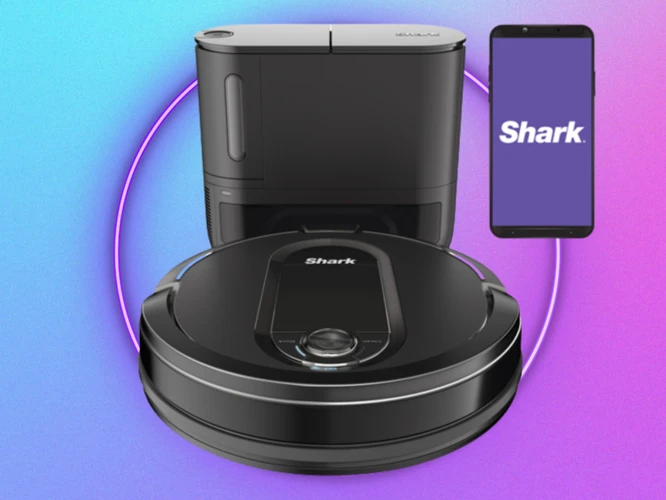
When it comes to keeping your floors and carpets pristine, there are very few alternatives to the trusty traditional vacuum cleaner. Powered by electricity, these cleaning appliances have been a staple in households for decades, and their design has certainly evolved since they were first introduced. But how do they work? What are their pros and cons? In this section, we’ll take a closer look at the traditional vacuum cleaner’s mechanics, benefits and drawbacks. So sit back, relax, and let’s dive into the world of corded cleaning tools.
How do they work?
Robot vacuum cleaners and traditional vacuum cleaners work differently in how they go about cleaning your home environment. Here’s a detailed breakdown of how the two types work:
| Robot Vacuum Cleaners | Traditional Vacuum Cleaners |
|---|---|
| Sensors and Navigation: Robot vacuum cleaners use various sensors and advanced algorithms for navigation. They also create a map of your home, which allows them to move around, avoid obstacles, and clean systematically. | Manual Control: Traditional vacuum cleaners are manually controlled via a handle and wheels. The user must push/pull and direct the vacuum cleaner around the house to clean floors and other surfaces. |
| Power Source: Robot vacuum cleaners are powered by rechargeable batteries that can last around 1-2 hours before they need recharging. They usually return to their charging station when the battery is low. | Power Outlet: Traditional vacuum cleaners get their power from electricity outlets via a cord that must be plugged in. They are limited by the length of the cord and the availability of power outlets. |
| Cleaning Mechanism: Robot vacuum cleaners come with a variety of brushes and suction mechanisms, such as side brushes, rolling brushes, and powerful fans that suck up dirt and debris. They also have filters that trap allergens and other pollutants. | Suction Mechanism: Traditional vacuum cleaners use a motor that powers a fan to create suction. They have a brush roll that agitates dirt and debris on the floor and carpets, which then gets sucked up by the fan. |
As you can see, both types of vacuum cleaners have their own unique ways of cleaning your home. Robot vacuum cleaners, with their advanced sensors and navigation, offer a more hands-off, automated approach to cleaning, while traditional vacuum cleaners require more effort and manual control from the user. The choice ultimately comes down to personal preference and the particular needs of your home environment.
Pros
When it comes to robot vacuum cleaners, there are several advantages that make them a popular choice for many households. Here are some of the benefits of using a robotic vacuum cleaner:
- Convenience: One of the biggest selling points of a robot vacuum cleaner is the convenience factor. These devices can be programmed to clean on a schedule or be controlled via a mobile app. This means you can sit back and relax while the robot does the cleaning for you.
- Time-saving: With a robot vacuum, you don’t have to spend a lot of time and effort cleaning your floors. The device is designed to navigate around your home and clean up dirt, dust, and pet hair automatically. This saves you time and allows you to focus on other tasks.
- Accessibility: Robot vacuum cleaners are ideal for people who have mobility issues or disabilities. These devices can easily clean under furniture and in tight spaces, which can be difficult for traditional vacuums.
- Noise-level: Another advantage of robot vacuums is that they produce less noise than traditional vacuum cleaners. This is because they are designed to be quieter and won’t disturb your household or neighbors.
- Low-maintenance: Robot vacuum cleaners require minimal maintenance, making them a great option for busy people. They come with self-cleaning features and can be easily emptied and cleaned, ensuring that they continue to perform optimally.
- Efficiency: Robot vacuum cleaners are designed to clean efficiently, meaning that they won’t miss spots or leave dirt behind. They are equipped with sensors to detect dirt, obstacles, and changes in floor height, ensuring that they provide a thorough clean.
The convenience, time-saving, and accessibility of robot vacuum cleaners make them a great investment for anyone looking to simplify their cleaning routine.
Cons
While robot vacuum cleaners have become a popular choice among homeowners, there are some downsides to consider. Here are some cons to keep in mind:
- Limited suction power: Compared to traditional vacuum cleaners, robot vacuums usually have less suction power, which means they may not be as effective at deep-cleaning carpets or picking up larger debris.
- Expensive: Robot vacuums can be pricey, especially if you want one with advanced features like mapping or voice control.
- Not ideal for certain spaces: Robot vacuums may struggle with navigating around tight spaces or cleaning corners effectively.
- May require more maintenance: Robot vacuums have more moving parts than traditional vacuums, which means they may require more maintenance over time.
- No human touch: While the convenience of having a vacuum that does the work for you is nice, there’s something to be said for the human touch when it comes to cleaning. A traditional vacuum cleaner allows you to target areas that need extra attention or use attachments for a more thorough clean.
It’s important to weigh these cons against the convenience and benefits of a robot vacuum cleaner to determine if it’s the right choice for your home.
Comparison
As we pit the mighty robot vacuum cleaner against its traditional counterpart in this ultimate showdown, it’s time for the comparison round. Now that we have delved into the inner workings and pros and cons of each type, let’s highlight the key factors that differentiate them. From design to features to performance, we’ll take a detailed look at the two contenders and determine which one comes out on top. So, brace yourself for a fierce competition and let’s compare them side-by-side!
Design
When it comes to design, both robot and traditional vacuum cleaners have their own unique features. However, there are certain aspects that set them apart from each other. Let’s take a closer look at the design of each.
Robot Vacuum Cleaners Design:
Robot vacuum cleaners generally have a sleek and futuristic design that can easily blend in with modern home decor. They are compact and typically round in shape, allowing them to maneuver under furniture and in tight spaces. One of the most notable design features of robot vacuum cleaners is their ability to navigate around obstacles and map out a room for efficient cleaning. They also have built-in sensors and cameras that allow them to avoid falling down the stairs or running into walls.
Traditional Vacuum Cleaners Design:
Traditional vacuum cleaners usually have a bulkier design with a larger body and long wand attachments. They come in various shapes and sizes, with upright and canister vacuums being the most common types. The wand attachments and cord length of traditional vacuums provide extended reach, making it easier to clean areas such as stairs and ceilings. They also come equipped with various attachments like crevice tools, dusting brushes, and upholstery nozzles to meet specific cleaning needs.
Comparison of Design:
When it comes to design, robot vacuum cleaners are definitely favored for their sleek and modern look. They are perfect for those who prioritize aesthetic appeal and want a vacuum that can be concealed easily. However, traditional vacuum cleaners have more versatility in their design as they come in various shapes and sizes, providing more options for households with unique cleaning requirements.
| Robot Vacuum Cleaners Design | Traditional Vacuum Cleaners Design |
|---|---|
| Sleek and futuristic design | Bulkier design |
| Compact and typically round in shape | Various shapes and sizes, with upright and canister vacuums being most common |
| Built-in sensors and cameras for avoiding obstacles and mapping out a room | Wand attachments and cord length for extended reach and various attachments for specific cleaning needs |
Both robot and traditional vacuum cleaners have their unique design features that cater to different cleaning needs. While robot vacuums are known for their aesthetically pleasing and compact design, traditional vacuums are more versatile and can accommodate various cleaning requirements.
Features
When it comes to features, both robot and traditional vacuum cleaners offer a variety of options to fit your needs. Let’s take a look at some of the features that you might find useful in a vacuum cleaner:
- Suction Power: One of the most important features of any vacuum cleaner is its suction power. Traditional vacuum cleaners typically have more suction power than robot vacuums, making them more effective at deep cleaning carpets and removing pet hair.
- Filtration: Another important consideration is filtration. Both types of vacuum cleaners can have HEPA filters, but traditional vacuums offer a wider range of filter options for allergy sufferers and those with respiratory conditions.
- Attachments: Traditional vacuums often come with a variety of attachments such as crevice tools, dusting brushes, and upholstery tools, which make it easier to clean a variety of surfaces. Robot vacuums, on the other hand, typically have a combination brush that adjusts to different surfaces.
- Smart Controls: Robot vacuums have become increasingly advanced with features such as voice control, scheduling, and mapping capabilities. Traditional vacuums have also evolved with features such as cordless options and Wi-Fi connectivity.
- Size and Weight: Robot vacuums are generally smaller and more compact than traditional vacuums, making them easy to store and maneuver around furniture. Traditional vacuums can be heavy and difficult to move, but they tend to have larger dustbin and bag capacities.
Ultimately, the features that are most important to you will depend on your particular cleaning needs and preferences. It’s important to consider which features will make vacuuming a more efficient and effective task for you.
Performance
When it comes to performance, both Robot and Traditional vacuum cleaners have their advantages and disadvantages. Let’s take a closer look at their differences by comparing them side by side in the table below.
| Robot Vacuums | Traditional Vacuums | |
|---|---|---|
| Convenience | Robot vacuums are incredibly convenient as they can work independently, often with scheduling features, and can clean areas that are hard to reach with a traditional vacuum E.g. under the bed, furniture etc. | Traditional vacuums require manual labor and constant attention, which can be tiring and time-consuming. |
| Cleaning Power | Robot vacuums have advanced capabilities with strong suction power and impressive filter systems that are great for maintaining a clean home. | Traditional vacuums, on the other hand, can be more powerful and have bigger dust bags or chambers that can handle larger jobs or carpet cleaning more effectively. |
| Noise | Robot vacuums tend to be quieter than traditional vacuums, which is great for people who are sensitive to noise. | Traditional vacuums can be loud, which can be annoying for some people. |
As you can see, both types of vacuums have their own strengths and weaknesses when it comes to performance. Ultimately, the choice between Robot and Traditional Vacuum Cleaners will depend on your personal preferences and specific cleaning needs.
Conclusion
After weighing the pros and cons of both robot and traditional vacuum cleaners, it’s hard to declare a clear winner. Each type has its strengths and weaknesses.
Robot vacuum cleaners are undoubtedly convenient, especially for those with busy schedules. They can work autonomously to keep your floors clean, even when you’re not home. Plus, their compact design and easy-to-use controls make them ideal for small apartments or those with limited storage space. However, they are not as powerful as traditional vacuums and may require additional maintenance, such as emptying the dustbin and cleaning the brush roll.
Traditional vacuum cleaners, on the other hand, are known for their superior cleaning power. They can handle tough messes and deep clean carpets better than robot vacuums. Plus, with the ability to switch between various attachments, they can be used for a variety of cleaning tasks throughout the home. Yet, their bulkier design and manual operation can be a deterrent for some.
In terms of design, robot vacuums have the upper hand in terms of space-saving and sleekness. However, traditional vacuums offer more customization options and attachments.
Regarding features, robot vacuums have made significant strides in recent years, with some models featuring smart mapping technology and voice control. Traditional vacuums often come with various attachments and adjustable suction settings.
Finally, when it comes to performance, traditional vacuums still reign supreme. However, robot vacuums are impressive in their ability to keep floors clean with minimal effort from the user.
In conclusion, the choice between a robot vacuum and a traditional vacuum ultimately depends on personal preferences and cleaning needs. If convenience and ease of use are top priorities, a robot vacuum may be the way to go. However, if deep cleaning and customization are important, a traditional vacuum may be the better choice. Regardless of which type you choose, both have their strengths and weaknesses, and both can be effective in keeping your home clean.
Frequently Asked Questions
Can robot vacuums clean carpets?
Yes, most robot vacuums are designed to clean different types of flooring, including carpets. Some models even have sensors that detect the type of surface and adjust the suction power accordingly.
Do traditional vacuums have better suction power than robot vacuums?
In general, traditional vacuums have more powerful motors and can therefore provide stronger suction power than most robot vacuums. However, some high-end robot vacuums come with powerful motors that can compete with traditional vacuums.
Can I control robot vacuums with my smartphone?
Yes, most robot vacuums can be connected to a smartphone app via Wi-Fi. This allows you to control the vacuum remotely, schedule cleaning sessions, and receive alerts and notifications.
How often do I need to replace the filter in a traditional vacuum?
It depends on the type of filter and how often you use the vacuum. Some filters need to be replaced every few months, while others can last up to a year or more. Refer to the manufacturer’s instructions for guidance.
Do robot vacuums work well in large rooms?
It depends on the size and layout of the room, as well as the type of robot vacuum. Some models have larger dustbins and longer battery life, making them better suited for larger rooms. Others may struggle to clean larger spaces in one go.
Can traditional vacuums clean stairs?
Yes, most traditional vacuums come with attachments that allow you to clean stairs and other hard-to-reach areas. However, it can be a bit tricky and time-consuming to clean stairs with a traditional vacuum.
Do robot vacuums work well with pet hair?
It depends on the model and the type of pet hair. Some robot vacuums are designed specifically for pet hair, with features like extra-strong suction power and tangle-free brushes. Others may struggle to pick up pet hair, especially if it’s long or tangled.
How often should I replace the brushes on a robot vacuum?
It depends on how often you use the vacuum and the type of brushes. Some brushes can last up to a year, while others may need to be replaced every few months. Refer to the manufacturer’s instructions for guidance.
Do traditional vacuums make a lot of noise?
Yes, traditional vacuums can be quite loud, especially if they have powerful motors. However, some models are designed to be quieter than others, with features like insulated motors and noise-reducing components.
Are robot vacuums expensive?
It depends on the model and the features. Some robot vacuums can be quite expensive, with prices ranging from a few hundred to a few thousand dollars. However, there are also budget-friendly options available, with prices starting as low as $100.
